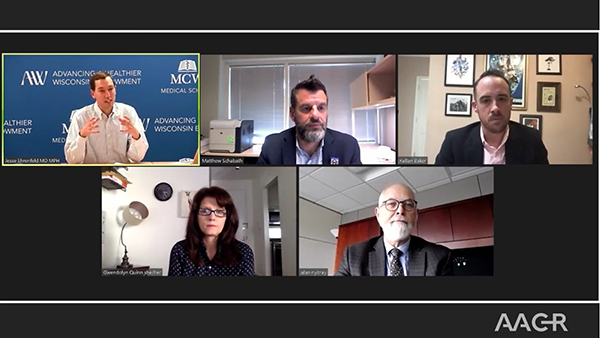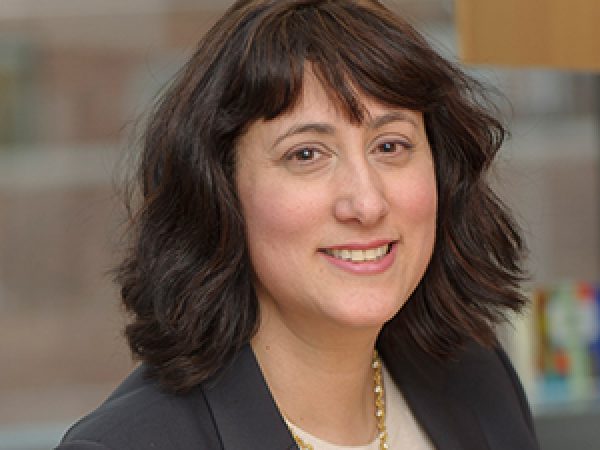AACR Conference Examines Cancer Disparities in the LGBTQ Population
Members of the LGBTQ community face staggering rates of discrimination in the United States. According to data from the Federal Bureau of Investigation (FBI), nearly 1 in 5 hate crimes in 2018 were motivated by anti-LGBTQ bias. Further, in a recent survey by the Center for American Progress (CAP) of more than 1,500 self-identified LGBTQ adults, over a third said that they had experienced discrimination in the past year, which impacted their psychological well-being, affected their ability to be hired for a job, and resulted in postponing or even avoiding medical treatment.
Because the LGBTQ population faces unique barriers when accessing the health care system, both preventative and essential care are affected, which can result in disparities in cancer risk and treatment. This topic was the focus of a plenary session at the AACR’s Virtual Conference on the Science of Cancer Health Disparities in Racial/Ethnic Minorities and the Medically Underserved, held last fall.
In this session, three speakers provided their perspectives on ways to overcome cancer health disparities in the LGBTQ community. The presentations delivered by Alan Nyitray, PhD, from Medical College of Wisconsin; Gwendolyn Quinn, PhD, from New York University Langone Medical Center; and Kellan Baker, MPH, a graduate student at Johns Hopkins Bloomberg School of Public Health, were followed by live question and answer sessions from the virtual audience, moderated by Jesse Ehrenfeld, MD, MPH, from Vanderbilt University and Matthew Schabath, PhD, from Moffitt Cancer Center.
Cancer in the LGBTQ population
While data about cancer risk among members of the LGBTQ community are somewhat limited, recent studies have found that this group may have an elevated rate of cancer diagnoses. Nyitray reviewed results from the 2013-2016 National Health Interview Survey, which compared cancer diagnoses between 129,431 heterosexual adults and 3,357 lesbian, gay, and bisexual adults. Compared with heterosexual men, gay men had over 50 percent increased odds of reporting a cancer diagnosis. Similarly, compared with heterosexual women, bisexual women had 70 percent increased odds of reporting a diagnosis of cancer. Nyitray suspects, however, that these data may be an underestimation of cancer incidence.
Research has also focused on the increased incidence of specific cancers in the LGBTQ population. For example, according to a recent study in JAMA Dermatology, the odds of developing skin cancer is significantly higher in both gay men and bisexual men compared with heterosexual men. Another study found that bisexual women have significantly higher rates of cervical cancer compared with heterosexual women. Some cancers that are associated with infectious viruses—such as human immunodeficiency virus (HIV) or human papillomavirus (HPV)—are more frequently seen among sexual minorities. Compared with heterosexual men, gay and bisexual men have increased incidence of anal cancer and Kaposi sarcoma. Similarly, lesbian or bisexual women have increased incidence of oropharyngeal cancer compared with heterosexual women.

Gwendolyn Quinn, PhD; Alan Nyitray, PhD
Baker highlighted a report that outlined all of the sexual and gender minority studies funded by the National Institutes of Health (NIH) in 2018. Of these 384 studies, less than 8 percent focused on cancer. “That means there’s a lot we don’t know about cancer incidence, prevalence, and survivorship among LGBT populations,” he said.
Challenges and barriers in the health care setting for LGBTQ people
Baker noted that disparities in cancer care in the LGBTQ population arise from “a complex web of intersecting factors,” including lack of legal protections, insurance coverage, LGBTQ cultural competence among clinicians, and anti-LGBTQ bias and discrimination. He said that barriers to care arise at three distinct levels: the patient, the provider, and the institution.
A key factor that shapes the barrier at the patient level is the avoidance of care due to previous experiences with discrimination or fear of mistreatment. In the CAP survey, 15 percent of LGBTQ people reported postponing or avoiding medical treatment due to discrimination. This figure jumps to nearly 30 percent among transgender individuals. Further, LGBTQ patients may not disclose that they identify as a sexual or gender minority—reasons may include fear of discrimination, or not being asked.
“We know that there is this double-edged sword of patients who don’t disclose their sexual orientation or gender identity, and clinicians who don’t ask about it,” said Quinn. This lack of communication—on both sides—can lead to missed opportunities, such as discussions about preventative care.
Additional barriers at the provider level include lack of training about the clinical needs of LGBTQ people, such as what sort of cancer screenings individuals may need, along with a lack of cultural competency, including making LGBTQ individuals feel more comfortable.
Institutional-level barriers include geographic areas that lack LGBTQ-inclusive health care, LGBTQ invisibility in and exclusion from clinical trials, and lack of coverage of appropriate screenings for transgender people. Barriers at all three levels can culminate in missed opportunities for cancer prevention and screening.
Cancer screening in the LGBTQ community
Lower rates of cancer screening may account, in part, for the increased cancer incidence observed in the LGBTQ population. Studies have shown that lesbians have lower rates of cervical cancer screening compared with heterosexual women, yet Quinn noted that women who only have sex with women may wrongly assume that they don’t need preventative gynecological care. Further, some transgender individuals may not identify with the organs that they were born with: A transgender man might not consider cervical cancer screening despite the risk of HPV infection. Transgender individuals are also significantly less likely to be screened for breast and colorectal cancer compared with cisgender individuals.
Anal cancer is relatively rare in the general population, but men who have sex with men have increased incidence of this disease. Many anal cancers are caused by infection with HPV, but there are no guidelines for screening, which may perpetuate the increased risk of cancer. To help combat this issue, Nyitray and colleagues initiated the Prevent Anal Cancer (PAC) Study, which aims to detect anal cancer earlier, address barriers to screening, and target communities at highest risk for anal cancer. This study is investigating self-swabbing of precancerous lesions and self-palpation of anal abnormalities at home in comparison with exams in the clinic.
Nyitray noted that the perceived threat of contracting COVID-19 could affect the perceived risk of developing anal cancer and the desire to self-screen for the disease. To better understand if the pandemic may affect individuals’ perception of anal cancer risk, Nyitray and colleagues have initiated the COVID-19, HIV, and Sexuality (CHAS) study, which aims to elucidate if the perceived susceptibility of contracting COVID-19 is associated with both the perceived susceptibility of developing anal cancer and the intention to self-screen for anal cancer.
Improving LGBTQ cultural competency among oncologists
Professionals not trained in recent years may lack sufficient training regarding communication with sexual and gender minorities, said Quinn. To help understand oncologists’ attitudes and knowledge about LGBTQ patients, Quinn and others conducted a national survey, published in 2019, with the aim to identify any potential gaps. While nearly 70 percent of oncologists agreed that it was important to know the gender identity of their patients, less than 40 percent agreed that it was important to know the sexual orientation of their patients. The majority of surveyed oncologists indicated interest in receiving information regarding the unique health needs of the LGBTQ community.
While some training modules exist, such courses are not specific to cancer. Seeing this as an unmet need, Quinn and her colleagues developed a training course, termed COLORS, for Curriculum for Oncologists on LGBT populations to Optimize Relevance and Skills. Pilot results suggest that this training improves LBGT-related knowledge and clinical practices among clinicians.
Beyond participating in a training course, Quinn recommended several ways to create a welcoming clinical environment for members of the LGBTQ community. Some of these recommendations include:
- Including sexual orientation, gender identity, name, and preferred pronouns (he/she/they) on intake forms
- Considering the impact of gendered titles, such as “women’s breast cancer support group” or “men’s prostate cancer center”
- Reducing the use of pink and blue in various aspects of the clinical encounter (such as pink robes in a mammography screening center)
- Offering every patient of reproductive age the option to discuss fertility preservation, and making referrals to a reproductive specialist
- Advocating for patients with insurance, especially transgender patients
For more information about cancer in the LGBTQ community, read this feature article by Cameron Walker published in Cancer Today magazine.



